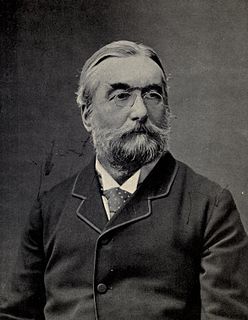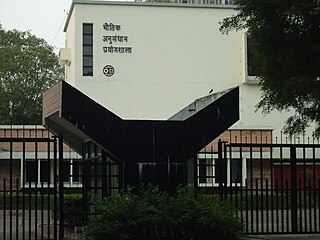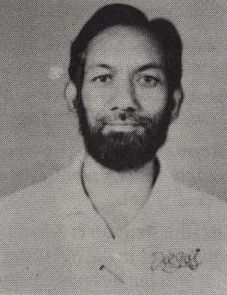Related Research Articles

Sir Joseph Norman Lockyer was an English scientist and astronomer. Along with the French scientist Pierre Janssen, he is credited with discovering the gas helium. Lockyer also is remembered for being the founder and first editor of the influential journal Nature.

Cecilia Helena Payne-Gaposchkin was a British-born American astronomer and astrophysicist who proposed in her 1925 doctoral thesis that stars were composed primarily of hydrogen and helium. Her groundbreaking conclusion was initially rejected because it contradicted the scientific wisdom of the time, which held that there were no significant elemental differences between the Sun and Earth. Independent observations eventually proved she was correct. Her work on the nature of variable stars, carried out with her husband, Sergei Gaposchkin, were foundational to modern astrophysics.

Angelo Secchi was an Italian Catholic priest, astronomer from the Italian region of Emilia. He was director of the observatory at the Pontifical Gregorian University for 28 years. He was a pioneer in astronomical spectroscopy, and was one of the first scientists to state authoritatively that the Sun is a star.

The Inter-University Centre for Astronomy and Astrophysics (IUCAA) is an autonomous institution set up by the University Grants Commission of India to promote nucleation and growth of active groups in astronomy and astrophysics in Indian universities. IUCAA is located in the University of Pune campus next to the National Centre for Radio Astrophysics, which operates the Giant Metrewave Radio Telescope. IUCAA has a campus designed by Indian architect Charles Correa.

The Udaipur Solar Observatory (USO) is in Udaipur, Rajasthan in India on an island in the Fateh Sagar Lake. The sky conditions at Udaipur are quite favourable for solar observations. Since the observatory is situated amidst a large mass of water, air turbulence which occurs due to ground heating by sun's rays is decreased. This improves the image quality and accuracy.

The National Centre for Radio Astrophysics (NCRA) of India is a research institution in India in the field of radio astronomy is located in the Pune University Campus, is part of the Tata Institute of Fundamental Research, Mumbai, India. NCRA has an active research program in many areas of Astronomy and Astrophysics, which includes studies of the Sun, Interplanetary scintillations, pulsars, the Interstellar medium, Active galaxies and cosmology and particularly in the specialized field of Radio Astronomy and Radio instrumentation. NCRA also provides exciting opportunities and challenges in engineering fields such as Analog and Digital Electronics, Signal Processing, Antenna Design, Communication and Software Development. NCRA has set up the Giant Metrewave Radio Telescope (GMRT), the world's largest telescope operating at meter wavelengths located at Khodad, 80 km from Pune. NCRA also operates the Ooty Radio Telescope (ORT), which is a large Cylindrical Telescope located near Udhagamandalam, India.

The Astronomical Observatory of Belogradchik or Belogradchik Observatory is an astronomical observatory owned and operated by the Institute of Astronomy of the Bulgarian Academy of Sciences. It is located near the town of Belogradchik in northwestern Bulgaria, at the foot of the Western Balkan Mountains. The other observatory operated by the same institute is the Rozhen Observatory.

The Indian Institute of Astrophysics (IIA), with its headquarters in Bengaluru, is an autonomous Research Institute wholly financed by the department of Science and Technology, Government of India. IIA conducts research primarily in the areas of astronomy, astrophysics and related fields.

The Kodaikanal Solar Observatory is a solar observatory owned and operated by the Indian Institute of Astrophysics. It is on the southern tip of the Palani Hills 4 km from Kodaikanal town, Dindigul district, Tamil Nadu state, South India.

Anil Kumar Das FRAS, FNI was an Indian scientist, astronomer. During the International Geophysical Year, observatories in Madrid, India, and Manila were responsible for monitoring solar effects. The Kodaikanal Solar Observatory in South India performed this monitoring using their recently built solar tunnel telescope. Das was the director of the Kodaikanal observatory at this time. In 1960 he was responsible for installing a tower/tunnel telescope at the facility that would be used to perform some of the first helioseismology investigations. The crater Das on the far side of the Moon is named after him.
Jay Myron Pasachoff is an American astronomer. Pasachoff is Field Memorial Professor of Astronomy at Williams College and the author of textbooks and tradebooks in astronomy, physics, mathematics, and other sciences.

The Physical Research Laboratory (PRL) is a National Research Institute for space and allied sciences, supported mainly by Department of Space, Government of India. This research laboratory has ongoing research programmes in astronomy and astrophysics, atmospheric sciences and aeronomy, planetary and geosciences, Earth sciences, Solar System studies and theoretical physics. It also manages the Udaipur Solar Observatory and Mount Abu InfraRed Observatory. The PRL is located in Ahmedabad.
Bhatnagar is a surname native to India, prevalent mainly among the Hindu Kayasthas.
Govind Swarup was a pioneer in radio astronomy. In addition to research contributions in multiple areas of astronomy and astrophysics, he was a driving force behind the building of "ingenious, innovative and powerful observational facilities for front-line research in radio astronomy".

Isabel Martin Lewis was an American astronomer who was the first woman hired by the United States Naval Observatory as assistant astronomer. In 1918, Lewis was elected a member of the American Astronomical Society. She was also a member of the Royal Astronomical Society of Canada and the Astronomical Society of the Pacific.

Jyotirvidya Parisanstha is an association of amateur astronomers. On August 22, 1944 some eminent citizens of Pune formed JVP, primarily for the spread of knowledge of astronomy among the public and also to make their own contribution as far as possible. It was the first association of its kind and remained so far for a few decades. Right from conception, JVP has been actively working for the propagation of astronomy in purely scientific temperament. JVP is the first Amateur Association to Host the ALL INDIA AMATEUR ASTRONOMERS MEET in 1991 and the first All India Messier Marathon in 2012.
Kavasji Naegamvala, also known as Kavasji Dadabhai Naegamvala (1857-1938) (FRAS) was an astrophysicist and the director of the Takhtasingji Observatory.
Gufran-Ullah Beig is an Indian meteorologist and a scientist at the Indian Institute of Tropical Meteorology, Pune. He is the programme director of System of Air Quality Forecasting and Research (SAFAR), a network of air quality and weather monitoring stations, which assists in the forecast of air quality and in maintaining an emission inventory. An elected fellow of the Indian Academy of Sciences, he received the Norbert Gerbier-Mumm International Award of the World Meteorological Organization in 2005, the first Indian to receive the honor. The Council of Scientific and Industrial Research, the apex agency of the Government of India for scientific research, awarded him the Shanti Swarup Bhatnagar Prize for Science and Technology, one of the highest Indian science awards for his contributions to Earth, Atmosphere, Ocean and Planetary Sciences in 2006.

Vijay Kumar Kapahi was an Indian astrophysicist and the director of the National Centre for Radio Astrophysics, an autonomous division of Tata Institute of Fundamental Research. Known for his research on radio galaxies, quasars and observational cosmology, Kapahi was an elected fellow of all the three major Indian science academies – Indian Academy of Sciences, Indian National Science Academy and National Academy of Sciences, India – as well as of the Maharashtra Academy of Sciences. The Council of Scientific and Industrial Research, the apex agency of the Government of India for scientific research, awarded him the Shanti Swarup Bhatnagar Prize for Science and Technology for his contributions to physical sciences in 1987.

The Rashbehari Siksha Prangan is a university campus, one of five main campuses of the University of Calcutta (CU). The college served as the cradle of Indian Sciences by winning the Nobel Prize in Physics in 1930 and many fellowships of the Royal Society London.
References
- ↑ Bulletin of the Astronomical Society of India, Volume 34, Number 2, June 2006 Archived 21 July 2011 at the Wayback Machine Obituary